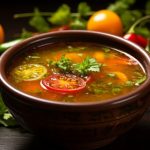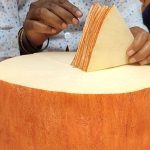Fried modak is more than just a favorite of Lord Ganesh on the Ganesh Chaturthi festival. This golden, crispy sweet carries cultural significance and a surprising nutritional profile.
Made with a rich filling of coconut, jaggery, and nuts, it offers a wholesome mix of energy, vitamins, and minerals. While its fried coating makes it a heavier indulgence compared to steamed versions, enjoying it in moderation can turn this festive delight into a source of nourishment.
Roots of Tradition
Modak has been an integral part of Indian culture for centuries, particularly as an offering to Lord Ganesha. Symbolizing prosperity and happiness, modaks have always been prepared during Ganesh Chaturthi, with fried versions adding a crunchy twist to this traditional sweet.
What Makes It Special
The filling of grated coconut, jaggery, and dry fruits makes fried modak a powerhouse of nutrients. Coconut offers healthy fats and manganese for bone health, while jaggery adds iron and folate to boost immunity. Frying in ghee or oil enhances flavour, making it a festive treat that blends taste and health.
Benefits of Fried Modak
- A single fried modak contains protein, fiber, and minerals, like calcium, potassium, and magnesium.
- Its fat and carbohydrate content provide sustained energy, making it ideal for celebrations when energy needs are high.
- The fiber from coconut and jaggery aids digestion, while antioxidants and vitamins strengthen overall health.
Mindful Indulgence
Since fried modak is higher in fat and calories than the steamed version, it increases calorie content. A couple of modaks can satisfy sweet cravings, deliver quick energy, and still fit into a balanced diet. Mindful portion control ensures you enjoy its taste and nutrition without overindulgence.
Treat yourself to fried modak this festive season. Enjoy its goodness, but keep it balanced!
Feature Image Credit: Pinterest.




